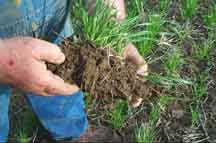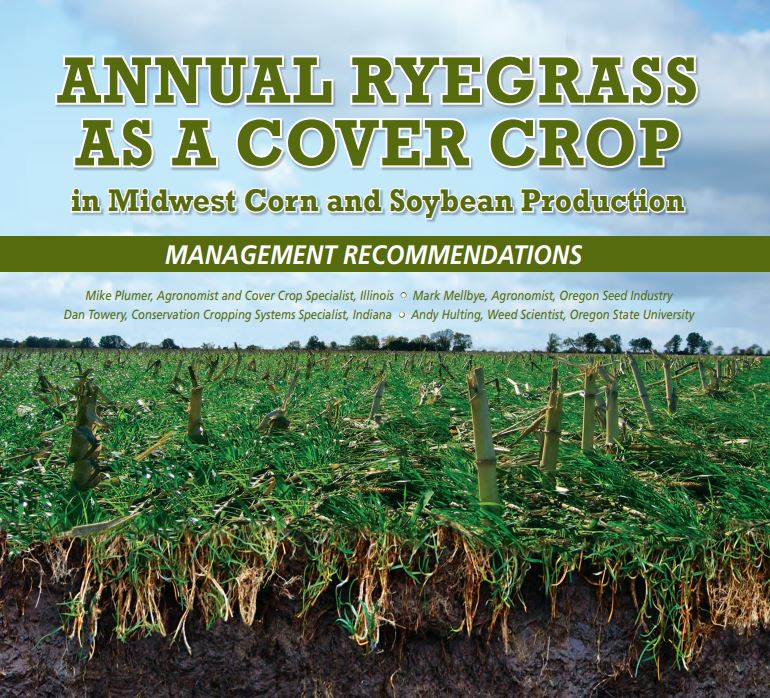Remember this bumper sticker: Every Day is Earth Day for Farmers?
It was a reminder to tree-huggers who, since the first Earth Day (1970), had been wagging their fingers at farmers for being “bad for the environment.” Farmers, for their part, have been equally suspicious of environmentalists for wanting to restrict farm livelihoods with unrealistic government regulations.
Given that animosity and suspicion, it seemed unlikely that
a partnership might ever form between farmers and environmentalists. But that
is exactly what happened in the early 2000s, after The Nature Conservancy (TNC)
had identified the Tippecanoe River watershed in Indiana among its top 10
priorities in America, in terms of threats to aquatic wildlife. They showed how
sediment in the runoff from fields adjacent to the Tippecanoe River were
killing freshwater mussels and other aquatic species in northwestern Indiana’s
watershed.
Dan Towery, who by then worked as a Natural Resources
Conservation Service (NRCS) agronomist and educator for the Conservation
Technology Information Center (CTIC) in West Lafayette, Indiana, witnessed the
historic partnership in real time. An Illinois native and graduate from Western
Illinois University and, later, the University of Illinois at Urbana-Champaign,
Dan had started his professional agronomy career in 1980, with NRCS.
Recalling those earlier days, Dan said the early ‘80s was
when no-tilling began to attract the attention of agronomists and innovative
growers. Given the erosion problems and loss of organic matter since the 1950s,
people awoke to the value of no-till, and leaving plant residue on the soil
after planting. Besides reducing erosion, no-till farming also reduces the
number of tillage trips, thereby reducing fuel consumption as well as soil
compaction. Likewise, it sets the stage for increasing organic matter and
healthier soil biology, leaving soil intact and decomposing plants to be
consumed by earthworms, fungi, and healthy bacteria.
Dan credits Larry Clemons, a conservation organizer for
Indiana TNC, with the skills to bring together a diverse partnership to address
the problem of freshwater pollution. The Indiana Department of Environmental
Management was included, as were various land trust and environmental
organizations, Soil and Water Conservation Districts, Purdue University, corporations,
and landowners, some whose activities impacted the river’s health. By the time
Dan started at CTIC, it was already part of that effort. It was he who
suggested the use of annual ryegrass as part of TNC’s plan to reduce runoff
from fields.
Dan was introduced to the Oregon Ryegrass Commission
administrator, Bryan Ostlund, in 2004 when Bryan was in the Midwest meeting
with Mike Plumer and a number of growers, looking at early cover crop test
plots on small farm acreage, using annual ryegrass.
By then, annual ryegrass had demonstrated its worthiness as
a cover crop, and that was one of the primary ways in which TNC addressed
agricultural impacts to the Tippecanoe. Buffer strips planted along the river
eliminated most of the riverbank collapse. Cover crops in adjacent fields
reduced or eliminated soil. But more importantly, it kept agricultural products
(fertilizer, chemicals, animal waste) from leaching into nearby waterways. Since
then, continued conservation efforts have begun to make progress in cleaning up
the Great Lakes, Chesapeake Bay, and the Gulf of Mexico.
Towery formed his own company in 2006 – Ag Conservation Solutions – and became a contractor for the Ryegrass Commission, collaborating closely with Mike Plumer. Working solo and as part of a team, Dan and Mike worked passionately, if not tirelessly, as advisors, facilitators, educators, and networkers. Sadly, Plumer died in 2017, and Dan continues his work to this day.
In terms of their outreach and education, both Dan and Mike
were active in organizations – both ag and conservation related – that helped
define best practices. Some of their advocacy work helped stimulate more
financial incentives for those reluctant to try cover crops. Some of their work
helped to shape environmental and ag policy, including the annual Farm Bill
passed by Congress.
Even as a good
teacher, Dan has also been the first to admit that his success has hinged on
his ability to listen and to learn. “And among the greatest teachers,” he said,
“are those that live the closest to the soil.” It is in that respect that Dan
has come to be a champion of “regenerative agriculture.”









